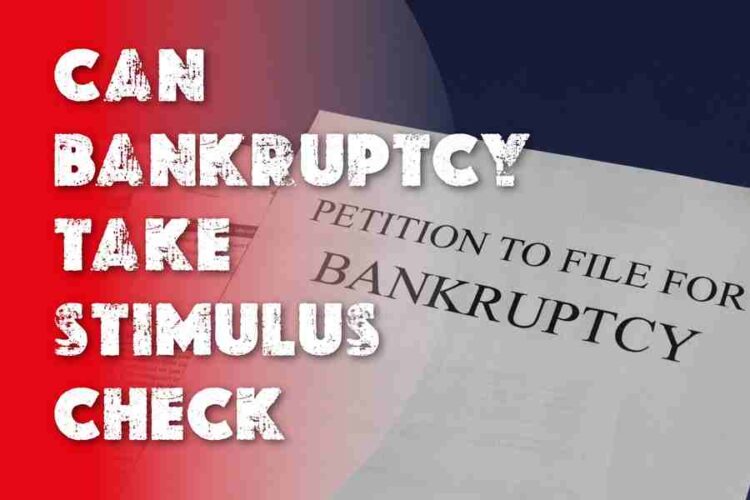Financial problems seem to be hitting Americans from all angles. From the subprime mortgage crisis to rising home heating and gas prices, many people are struggling just to meet their monthly expenses. Along with these helpful grants come strings attached that can make qualifying for this financial assistance challenging for many individuals. For example, you must use your stimulus check as a down payment on a primary residence and close on your new home before September 21, 2010, or forfeit the money. If you have recently purchased or are planning to buy a home in the near future, reading about what impact bankruptcy can have on your Stimulus Check may be beneficial.
Can Bankruptcy Take Your Stimulus Check?
While most people who receive a Stimulus Check will be able to use it as a down payment on a home, some individuals who file for Chapter 7 or Chapter 13 bankruptcy will not be allowed to keep their Stimulus Check. If you have filed for Chapter 7 bankruptcy and your bankruptcy trustee determines that you used fraudulent conduct or a false statement to obtain the Stimulus Check, the trustee may petition the court to revoke the money. If you have filed for Chapter 13 bankruptcy, you must repay your Stimulus Check during the length of your repayment plan.
How To Use A Stimulus Check As A Down Payment
1. Repay Your Down Payment With the Stimulus Check
Using your Stimulus Check to repay your down payment is probably one of the most common ways you can use it. It’s not the most creative way to use it, but it’s a great idea for those who don’t have any other funding sources readily available. You have to have at least 10% equity in the property you’re buying in order to qualify for the government’s Guaranteed Down Payment program. With your 10% down payment and your stimulus check, you can reduce your monthly mortgage payments by using it to repay your original down payment. You can also use it to increase your loan-to-value ratio, which may make it easier to get a loan approval.
2. Use it as a Lump Sum for Repairs and Renovations
If you’re buying a home that needs renovations, you may be able to use your stimulus check as a down payment on a renovation loan. What’s even better is that when you buy the property, your lender will count the cost of the renovations as part of the purchase price. With your 10% equity in the property, you can still qualify for the government’s Guaranteed Down Payment program. This way, you’re essentially getting your down payment and the renovations for free! If you’re buying a home that needs minimal or no repairs, you can use your stimulus check as a down payment for a renovation loan that allows you to take on additional money for renovations. Your renovation loan will be a percentage of the cost of the home and renovations. Your 10% equity in the property may make you eligible for the government’s Guaranteed Down Payment program. If you use your stimulus check for renovations, make sure you have enough cash flow to cover the increased monthly payment.
3. Use it as a Lump Sum for Closing Costs
Closing costs can add up. It’s a one-time fee that’s usually between 2% and 5% of the purchase price of your home. If you don’t have enough cash on hand to cover these closing costs, your mortgage lender can “pay” them out of your future home equity. If you’re buying a home that needs minimal or no repairs, you can use your stimulus check towards closing costs. If you’re buying a home that needs renovations, you can use your stimulus check to offset the closing costs that your mortgage lender “pays” out of your future home equity. Your 10% equity in the property may make you eligible for the government’s Guaranteed Down Payment program. If your closing costs are minimal, using your stimulus check to cover them entirely is a great idea. You’re getting a $2000 “gift” from the government, and you don’t have to pay it back. If your closing costs are significant, you will want to consider another option for funding your closing costs.
4. Use it as a Lump Sum for a Mortgage Deposit
Depending on the type of loan you use, you may have to come up with cash or cash-equivalent deposit when you close your loan. If you don’t have enough cash on hand to put towards a deposit, you can use your stimulus check as a down payment. If you’re buying a home that needs minimal or no repairs, you can use your stimulus check towards a mortgage deposit. If you’re buying a home that needs renovations, you can use your stimulus check to offset your mortgage deposit. Your 10% equity in the property may make you eligible for the government’s Guaranteed Down Payment program. If you use your stimulus check to cover the deposit, you will want to make sure you have enough cash flow to make the mortgage payments each month.
5. Combine It With Other Funding Options to Come up with a 20% Down Payment
If you’re short funds for a 20% down payment, why not combine your stimulus check with other funding sources? For example, let’s say you’re short $5000 for a 20% down payment on a home. You can use your stimulus check as a lump sum and then apply for a zero-down mortgage loan. Depending on your credit rating, you may have to pay a slightly higher interest rate. Another option is to use your stimulus check towards a down payment assistance program. There are several down payment assistance programs that are offered by state and federal governments. If you’re considering using your stimulus check as a down payment for a home, you can also use it to cover any closing costs. You should also consider using it to cover your down payment assistance.
How To Handle Bankruptcy And A Stimulus Check?
- If you have filed for Chapter 7 bankruptcy, it is critical that you keep track of your Stimulus Check. This is because your bankruptcy trustee may ask the court to revoke the money if you have not used it as a down payment on a home by the deadline date. If this occurs, the court will order you to repay your Stimulus Check during the length of your repayment plan. However, some courts have ruled that a homebuyer’s assistance program does not qualify as a “special payment” and, therefore, does not have to be repaid by a debtor. Also, there is no law that requires a debtor to disclose receipt of a Stimulus Check on their Chapter 7 or Chapter 13 petition.
- While most people who receive a Stimulus Check will be able to use it as a down payment on a home, there are other ways that you can use this money. For example, A Stimulus Check can be used as a down payment on a car.Preview in new tab
- A Stimulus Check can be used to pay back student loans. In order to do this, you will need to contact your loan servicer and ask them if they will allow you to use your Stimulus Check as payment on your student loans.
- If you are still employed, a Stimulus Check may be used to pay off some of the money that you owe on your mortgage. This is because it is possible that the money could be applied toward the principal balance of your home loan. If this is the case, then you will have more money in hand after paying off your mortgage and you can use it for other things.
- If you have filed for Chapter 7 bankruptcy and have received your Stimulus Check, you need to be careful about how you use the funds. You cannot use the money for your down payment or closing costs, but you can use it for the purchase of a home. You simply must find a less expensive home or adjust your home search to fit your budget. The same holds true for people who have filed for Chapter 13 bankruptcy. You can use your Stimulus Check for the purchase of a home, but you need to find a less expensive home. Alternatively, you can spend your money on something other than a home. If you do so, you must comply with all applicable laws and regulations.
Conclusion
A Stimulus Check can be an extremely helpful financial tool. In fact, the government has given out $28 billion in Stimulus Checks to help individuals and families cope with the rising cost of energy. However, individuals who have filed for Chapter 7 or Chapter 13 bankruptcy must be careful about how they use the funds. In addition, those who have filed for Chapter 13 bankruptcy must adjust their home search to fit their budget or spend the money on something other than a home.










